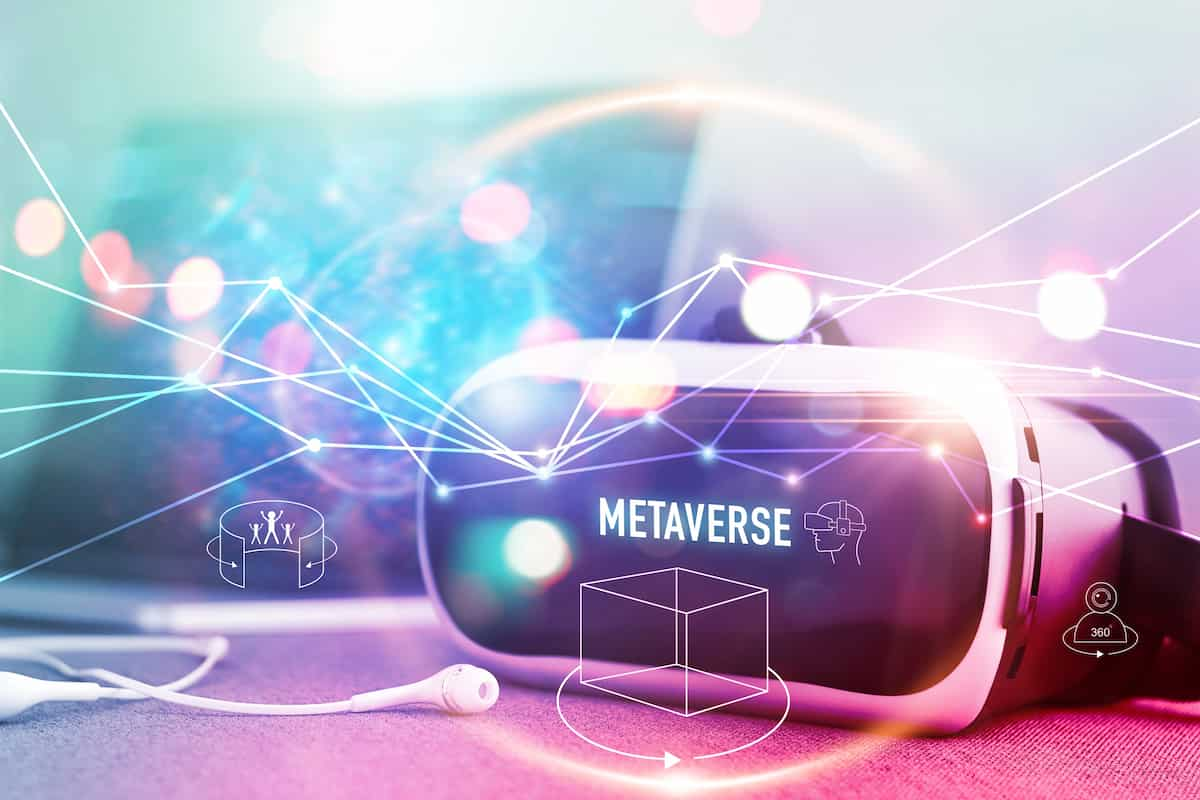From comics to movies and augmented reality, the metaverse is infused into so many aspects of our current reality.
But what exactly is the metaverse? What’s the big deal? How does it work?
Read on to see the answers to these commonly-asked questions about the metaverse.
Defining the Metaverse
Neal Stephenson first used the word “metaverse” in his 1992 sci-fi novel Snow Crash. The book describes the metaverse as a digital world that exists in parallel to the real world. Much like other technologies, such as artificial intelligence, the metaverse is moving from science fiction to reality.
Similar to “cyberspace,” the metaverse is a broad term that doesn’t have a rigid definition.
Today, when most people talk about the metaverse, they use the term as an abstract idea.
Nonetheless, a few practical aspects of a future metaverse exist today, such as virtual reality (VR) and augmented reality (AR).
Examples include:
- 3D graphics and avatars
- 3D Massively multiplayer online (MMO) games
- Virtual collectible items (i.e., non-fungible tokens)
- Online digital stores
- Immersive concert and live event platforms
How Does the Metaverse Relate to Crypto?
The metaverse and crypto are two separate but closely related technologies. For example, virtual in-game items and MMOs existed decades before cryptocurrency became popular.
So why use crypto in the metaverse? Cryptocurrency currently has two clear benefits in the metaverse: easier player-to-player (P2P) trading; and guaranteed scarcity for digital items.
Player-to-Player Trading
A VR game doesn’t necessarily have to use cryptocurrency, but it helps in many cases. For instance, users may be able to use fiat currency (i.e., dollars or euros) to buy virtual items. By having a direct payment system like crypto, users don’t have to pay high fees to third-party payment processors.
Let’s say a user wants to buy an in-game item from someone who wants to sell it. Suppose the game integrates crypto payments via assets, like Polygon (MATIC). In that case, the transfer can be completed in less than a minute with fees totaling less than $1 regardless of the transaction amount.
Guaranteed Scarcity
One major issue with in-game items has traditionally been how to prove and enforce scarcity. The game creator might say that a particular item is 1 of 100, while it’s actually 1 of 1 million. Non-fungible tokens (NFT), which prove scarcity through cryptography and a transparent digital ledger called a blockchain, solve this conflict.
With NFTs representing in-game items, it’s much easier for users to verify precisely how scarce it is. In turn, it’s easier for users to determine how much an in-game item is worth collectively. NFTs can also be used for applications like CEEK VR — a platform that issues digital tickets for VR-based concerts and other live events.
Metaverse Cryptocurrencies
Several popular altcoins (cryptocurrencies other than Bitcoin) focus on building unique metaverse applications, especially for digital collectibles and VR games. Here are three well-known examples that CoinMarketCap has labeled as metaverse coins.
Read the crypto glossary to get more familiar with essential terms like blockchain, ERC-20 token, and NFTs.
Decentraland (MANA)
Decentraland is a virtual reality platform where users purchase virtual plots of land that they can later navigate, build upon, and monetize.
The platform uses two tokens, MANA and LAND. MANA is an ERC-20 token for the platform’s decentralized autonomous organization (DAO), a governance system that enables MANA holders to determine how the Decentraland world behaves.
MANA holders propose and vote on policy updates, the specifics of upcoming LAND auctions, and the types of content allowed on the platform.
The Sandbox (SAND)
Launched in 2011 by Pixowl, The Sandbox (SAND) is a blockchain-based virtual world allowing users to create, build, buy and sell digital assets in the form of a game. By combining the powers of decentralized autonomous organizations (DAO) and non-fungible tokens (NFTs), the Sandbox creates a decentralized platform for a thriving gaming community.
According to the official whitepaper, The Sandbox platform’s primary mission is to introduce blockchain technology into mainstream gaming successfully. The platform focuses on facilitating a creative “play-to-earn” model, which allows users to be both creators and gamers simultaneously.
The Sandbox employs the powers of blockchain technology by introducing the SAND utility token, which facilitates transactions on the platform.
Enjin Coin (ENJ)
Enjin Coin (ENJ) is the native cryptocurrency of Enjin Network, a social gaming platform that allows users to create websites and clans, chat, and host virtual item stores.
ENJ is an ERC-20 token that allows game developers to tokenize in-game items and back the value of digital assets (i.e., non-fungible tokens) that exist on the platform. Users can buy, sell, and trade in-game items with ENJ.
Every asset minted on the platform contains ENJ, a minting resource that is locked inside NFTs and removed from circulation. Minting blockchain assets with ENJ provides a variety of benefits to creators and users. Enjin’s “melting” functionality allows users to destroy their in-game assets at any time to retrieve the ENJ value from within.
What Does the Future Hold for The Metaverse?
Just like the internet in the 1990s, the metaverse is still in its early years of development.
Besides the cryptocurrency projects featured above, major corporations like Meta, Google, Apple, Microsoft, Roblox, and Epic Games are also working towards developing this technology.
It’s hard to say what the metaverse will look like a decade from now, but the possible applications are limitless.
Start Trading Metaverse Coins on Abra
Abra supports 75+ cryptocurrencies, including metaverse coins such as MANA, SAND, and ENJ.
Download the Abra app and begin your crypto journey today!
Download AppAbout Abra
Established in 2014, Abra is on a mission to create a simple and honest platform that enables millions of cryptocurrency holders to maximize the potential of their assets. Abra enables both individuals and businesses to safely and securely buy, trade, and borrow against cryptocurrencies – all in one place. Abra’s vision is an open, global financial system that is easily accessible to everyone.
Why Abra
Based in the United States, Abra is available in over 150 countries and makes it easy to convert between crypto and a wide variety of local fiat currencies. With over 2MM customers, $7B in transactions processed, and $1.5B in assets under management, Abra continues to grow rapidly. Abra is widely loved and trusted – in April 2022, pymnts.com reviewed and rated Abra amongst the top 5 most popular crypto wallets in the market. Abra is backed by top-tier investors such as American Express Ventures and First Round Capital.
How Abra Protects Your Funds
Abra places clients’ financial objectives and security first. Abra practices a culture of risk management across all levels and functions within the organization.
Abra employs a state-of-the-art enterprise risk management framework that comprises a comprehensive set of policies, procedures, and practices detailing all applicable risk-related objectives and constraints for the entirety of the business. Abra has instituted a complete set of requisite systems and controls that continuously enforce these policies, procedures, and practices to manage all operations, including credit and lending. Abra’s independent Risk Committee comprises experienced compliance, risk, securities, and fraud operations professionals with backgrounds in industries ranging from traditional and digital assets banking, payments, remittance, to fintech.
Please visit our FAQ to learn more.


